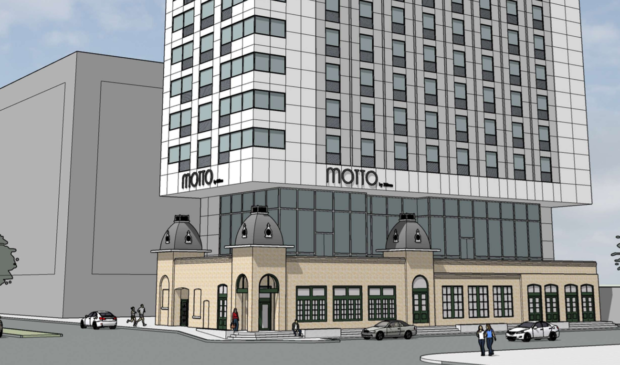Historic Landmark Commission vetoes skyscraper design for historic building
Thursday, August 27, 2020 by
Jessi Devenyns In recent months, there have been several cases of developers proposing multi-story buildings as a way to preserve the facades of historic structures while balancing the economics of Austin real estate.
On Aug. 24, the Historic Landmark Commission firmly put its foot down on the practice of constructing skyscrapers above historic buildings when it denied the certificate of appropriateness for the 150-foot-tall hotel developers proposed for the property at 1415 Lavaca St.
“There seems to be a trend of putting high-rise additions onto historic landmark buildings,” Historic Preservation Officer Steve Sadowsky said, referring to the Masonic lodge renovation plans. “This is not a concept that we want to have as a precedent for future development.” He did note that the economic realities of the real estate market are driving the designs of projects at this scale.
Commissioners agreed with this assessment and voted 6-2 to deny the application for a certificate of appropriateness. Commissioners Witt Featherston and Mathew Jacob voted against the motion.
Featherston expressed his view that he did not believe the design was moving in the right direction but he wanted to give the applicant the opportunity to move forward in the process. “Unfortunately, we don’t get to choose who protects them for us …because we can’t afford to do it ourselves,” he said.
The proposed structure for the site is a 13-floor hotel by Hilton called the Motto. The design has already undergone several iterations with input from historic preservation staff and commissioners resulting in a blueprint for a modern structure jutting up from the center of the Bartholomew-Robinson Building and seeming to float for 30 feet above the historic cupolas of the one-story structure before taking on the conventional appearance of a skyscraper.
“What they are planning to do does not meet the Secretary of Interior’s Standards and there’s no getting around that,” Commissioner Terri Myers said. These standards govern what designs the commission may allow for additions to a historic structure.
Even with strong pushback on the design from the commission, Sadowsky said that staffers were neutral on the project. He explained that although the proposal unquestionably did not meet the required standards, the historic resource is currently gutted and unoccupied. Without major intervention, he said the building is “doomed.”

Jill Sutton, the executive director of Texas Osteopathic Medical Association, which owns the building, told the commission her nonprofit organization is in favor of the proposal, and believes the developers will retain the historic integrity of the building. Her staff was forced to move out in 2017 during renovations when contractors discovered a myriad of issues, including sewer and drainage problems.
Other neighbors were uncertain that the developers were capable of keeping the original resource structurally intact during renovations. State Bar of Texas executive director Trey Apffel, whose organization is located next door, had “grave concerns” about the developer’s ability to complete construction without damaging the building’s façade.
Several other citizens, including Alyson McGee, who serves on the board of Preservation Austin, doubted the feasibility of the proposal to retain the historic character and significance of the 137-year-old building.
“We’re being asked to approve an addition that rises up from the center of this historic building, and that’s not the only possibility for this historic resource,” said Commissioner Myers, who suggested that other development solutions may be in the best interest of this historic resource.
Although a denial of the certificate of appropriateness by the Landmark Commission is usually the end of the road, Sadowsky noted that the applicant has the ability to appeal the denial.
Renderings courtesy of MCS Architects LLC.
The Austin Monitor’s work is made possible by donations from the community. Though our reporting covers donors from time to time, we are careful to keep business and editorial efforts separate while maintaining transparency. A complete list of donors is available here, and our code of ethics is explained here.
You're a community leader
And we’re honored you look to us for serious, in-depth news. You know a strong community needs local and dedicated watchdog reporting. We’re here for you and that won’t change. Now will you take the powerful next step and support our nonprofit news organization?




